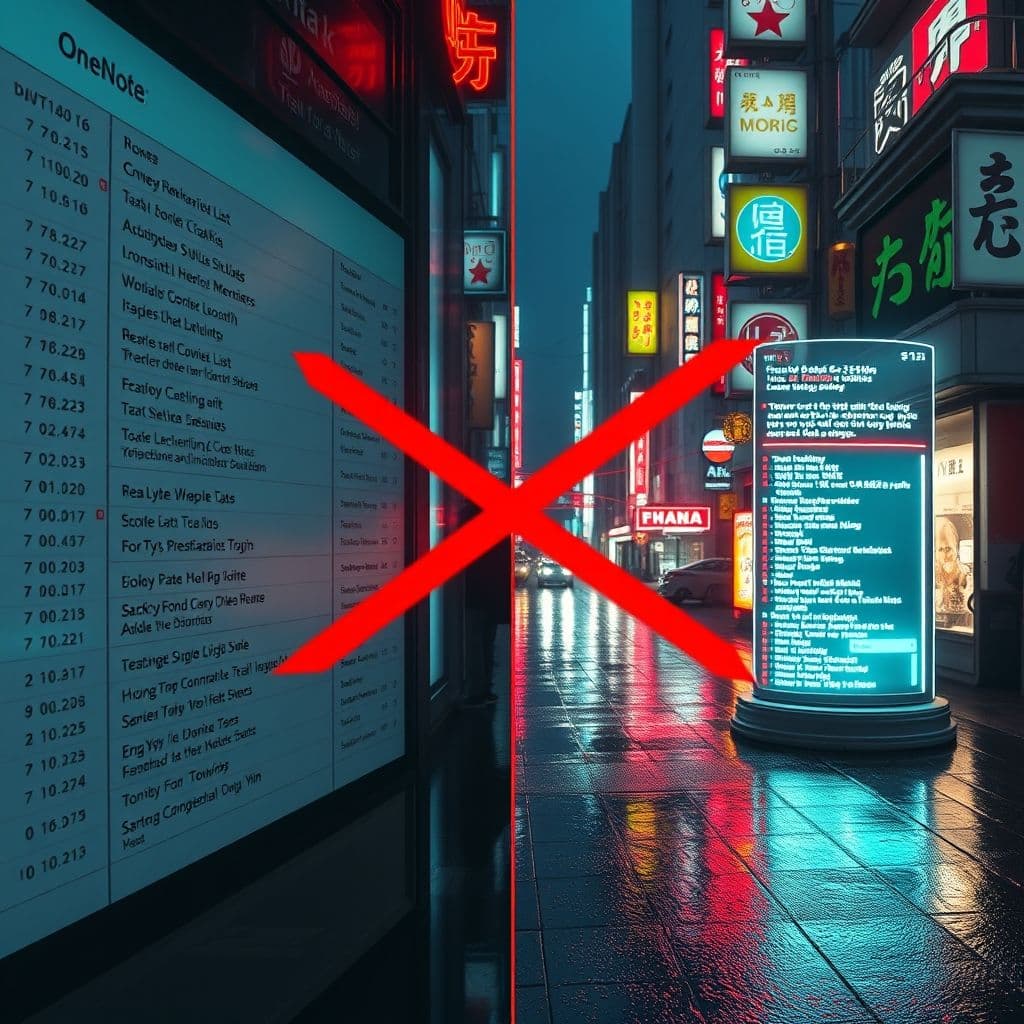OneNote Task Management Woes: A SaaS Solution for Real-Time Organization

Microsoft OneNote users are voicing a common frustration: while the app excels at note-taking, its task management capabilities fall short when it comes to real-time updates and workflow integration. The current 'Find Tags' feature creates static snapshots rather than dynamic task lists, leaving productivity-minded professionals wanting more. Could a specialized SaaS solution bridge this gap?
The Core Problem: Static Lists in a Dynamic Workflow
The fundamental issue lies in OneNote's approach to task management. While tags and summary pages help organize to-dos, they don't automatically reflect changes made after creation. Users report several pain points: summary pages that don't update in real-time, duplicate tasks appearing in both original and summary locations, and no way to maintain a constantly updated master task list. These limitations force manual refreshing and reorganization, breaking workflow continuity.

SaaS Solution Concept: Real-Time OneNote Task Sync
Imagine a lightweight SaaS tool that integrates seamlessly with OneNote through API connections. This hypothetical solution would monitor all tagged tasks across notebooks, maintaining a constantly updated master view that reflects changes in real-time. Key features could include automatic syncing between original tasks and summary pages, customizable refresh intervals, and visual indicators showing task status changes.
The system might offer advanced filtering options—sorting by notebook, section, or date—while preserving OneNote's existing organizational structure. For power users, additional visualization tools could transform traditional task lists into interactive mind maps or Kanban boards, addressing the needs of visual thinkers who struggle with linear lists.

Potential Use Cases and Benefits
Meeting management becomes significantly smoother when action items automatically populate a master list without manual consolidation. Weekly reviews transform from scavenger hunts through multiple notebooks to comprehensive overviews. The solution could particularly benefit project managers coordinating team tasks, students organizing research, and executives tracking action items across numerous meetings.
Conclusion
While OneNote excels as a digital notebook, its task management limitations create unnecessary friction in modern workflows. A dedicated SaaS integration focusing on real-time syncing and visualization could unlock new productivity potential without requiring users to abandon their preferred note-taking environment. Such a tool would need to balance powerful features with OneNote's signature simplicity to succeed.
Frequently Asked Questions
- How technically feasible is this OneNote SaaS integration?
- Microsoft's OneNote API provides reasonable access to notebook content, making basic task monitoring achievable. Real-time updates would require either frequent polling or push notifications, with the latter being more resource-efficient. The main challenge would be maintaining sync accuracy across multiple devices and OneNote versions.
- Could this work with the free version of OneNote?
- API access differs between OneNote versions, so functionality might vary. A well-designed SaaS solution could implement graceful degradation, offering core features across all versions while reserving advanced capabilities for fully-supported environments.
- What about privacy and data security with a third-party tool?
- Any hypothetical solution would need robust security measures, potentially processing data locally when possible and using minimal cloud synchronization. OAuth implementation would allow users to control access permissions at the notebook level.


